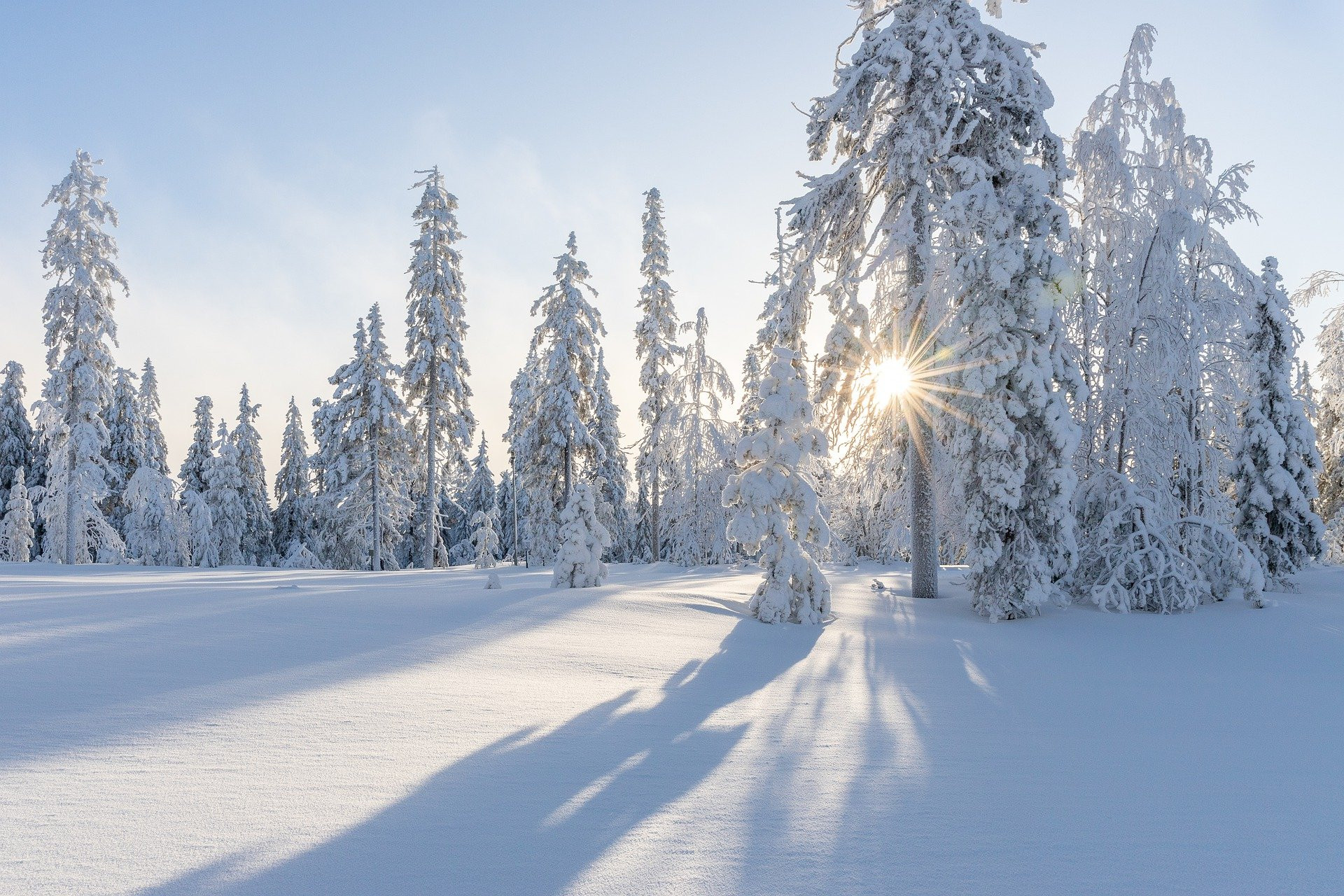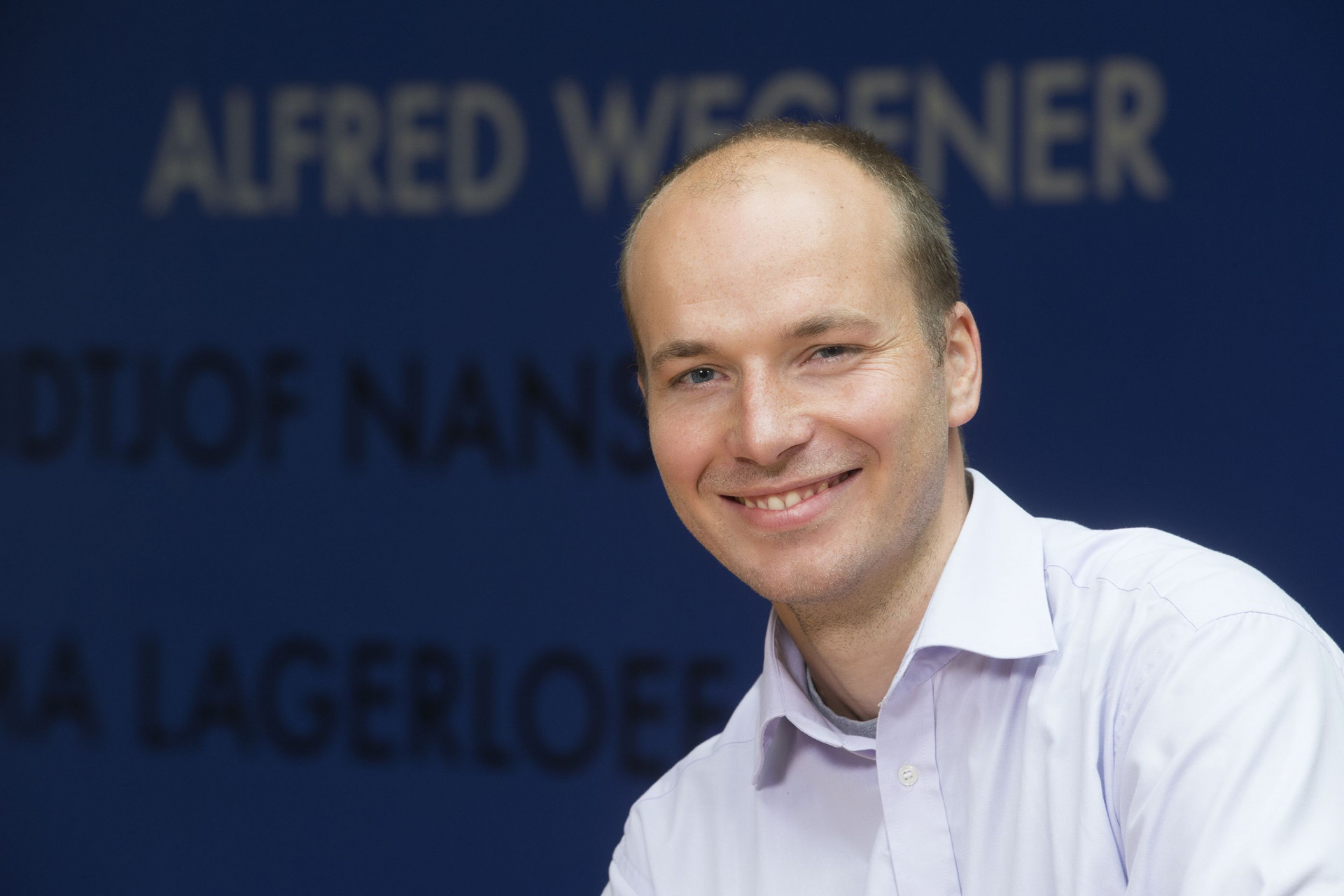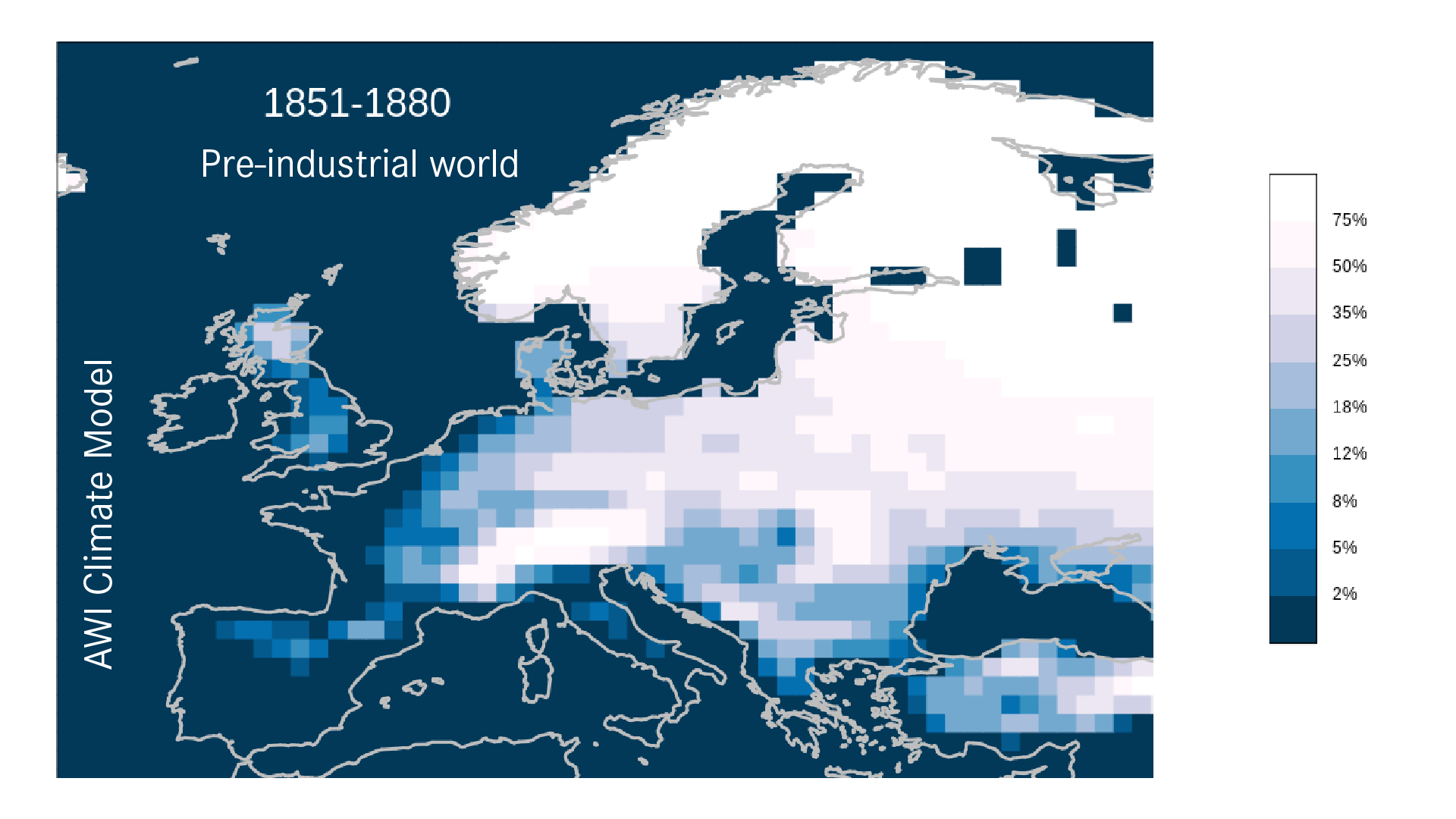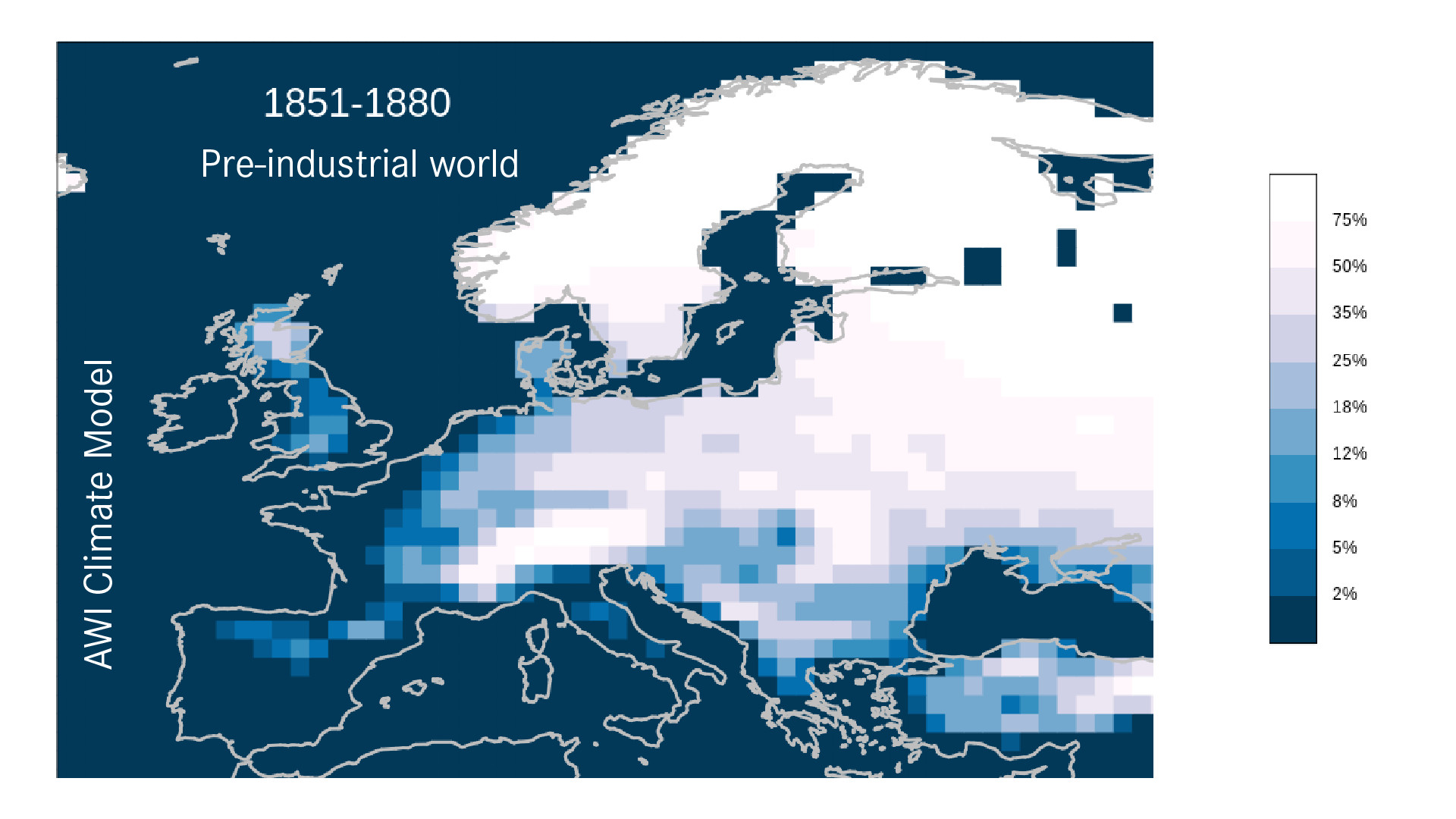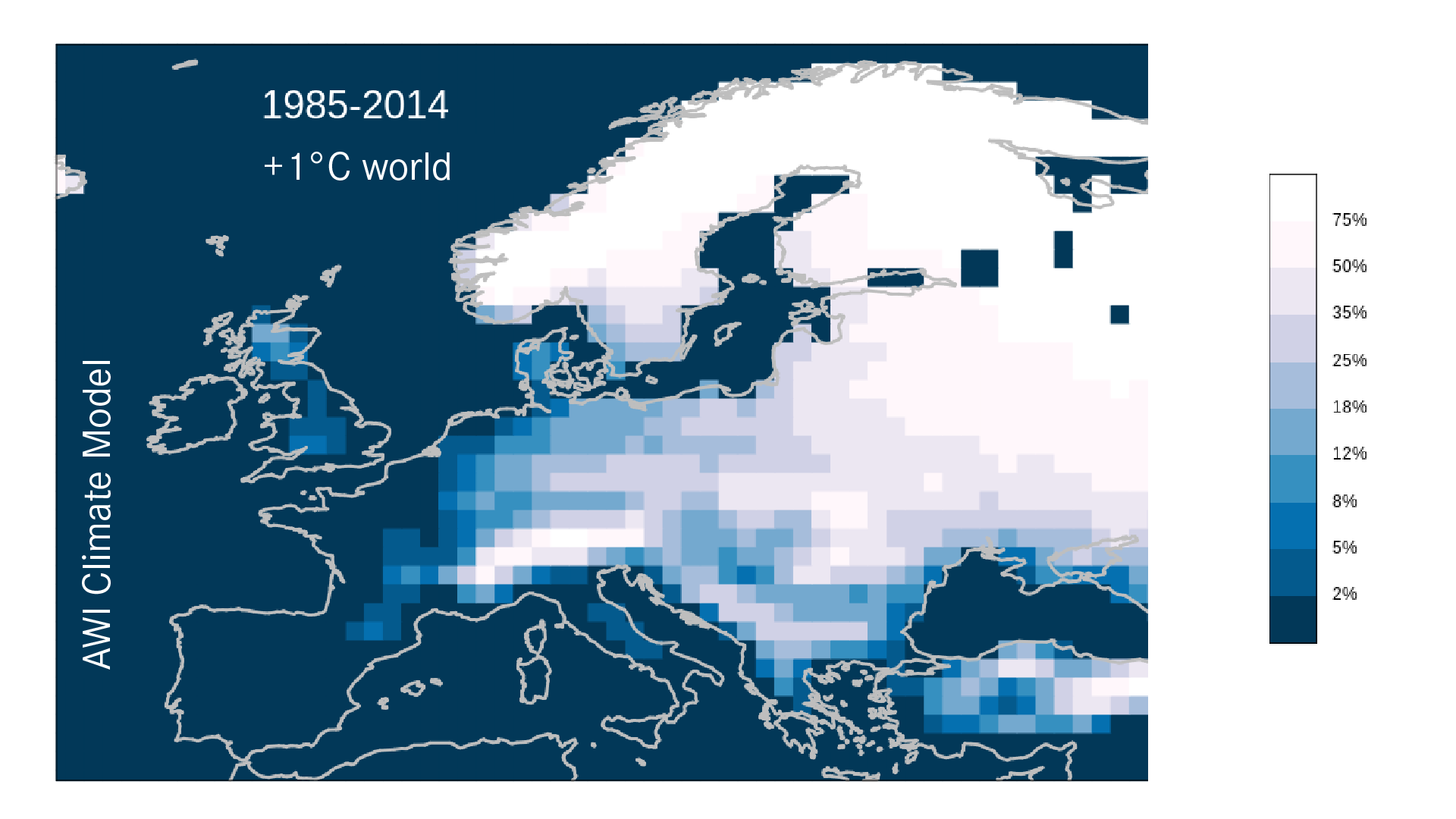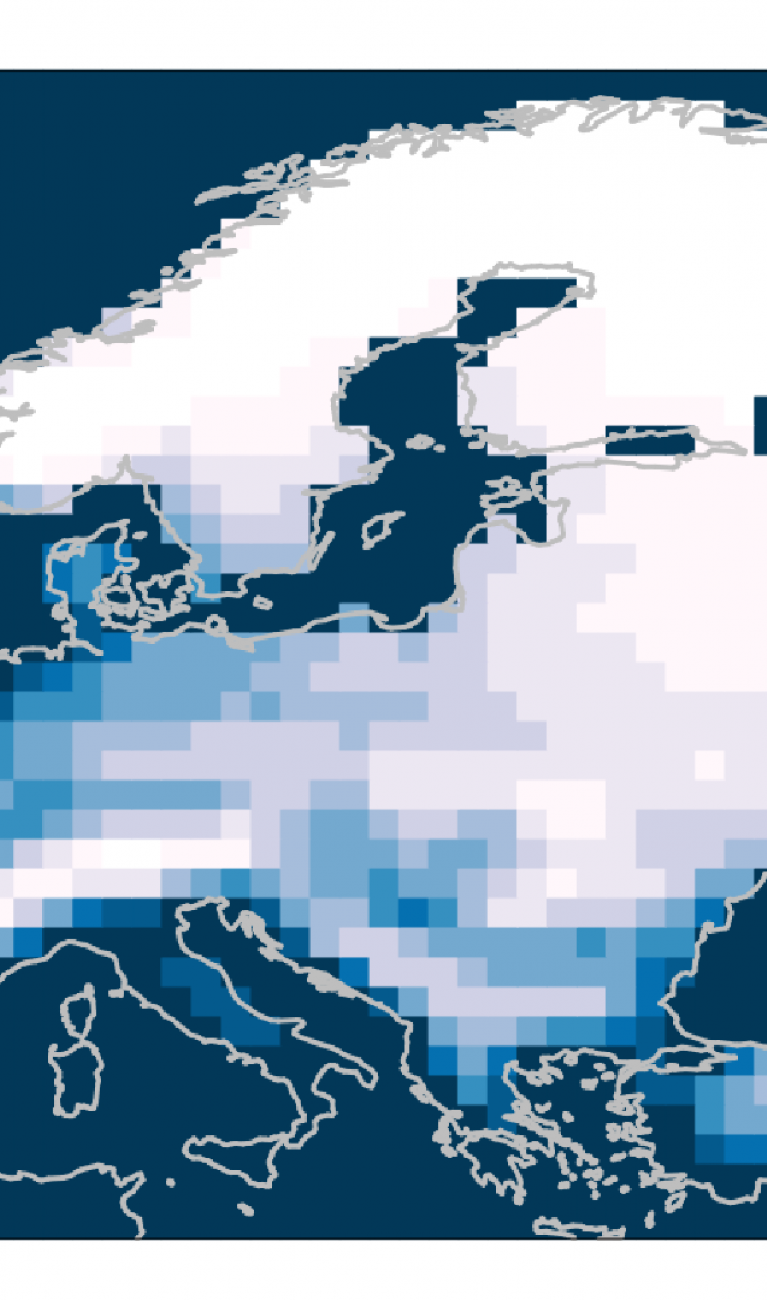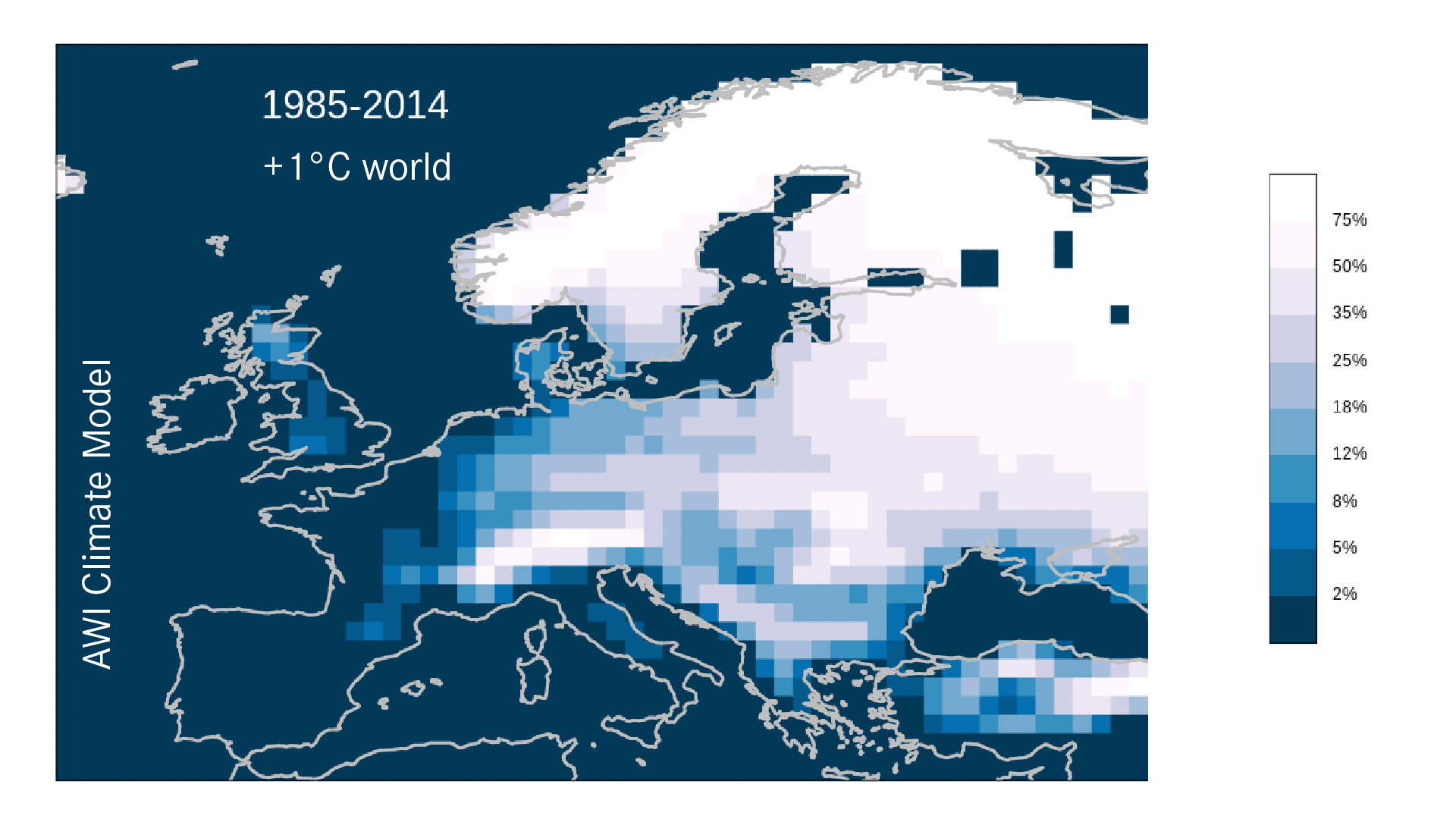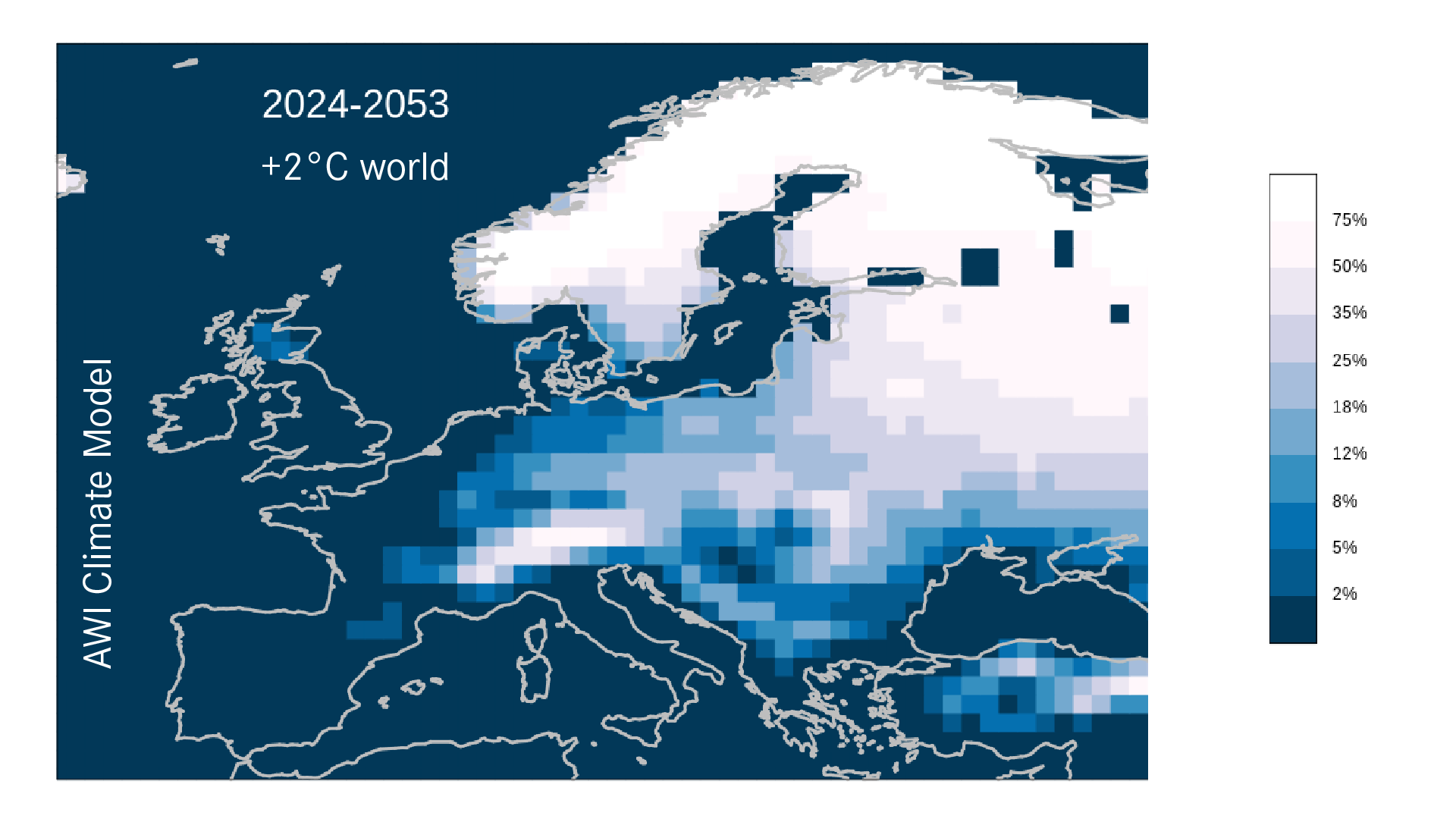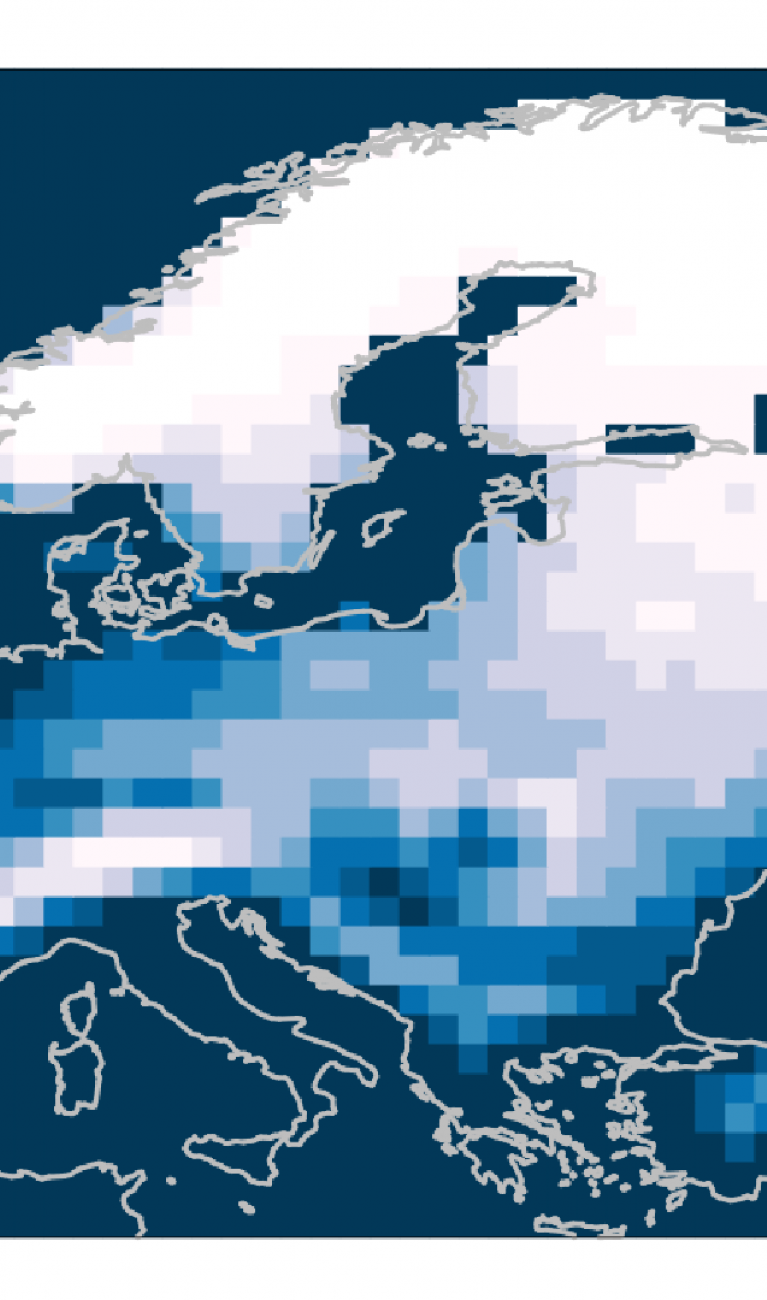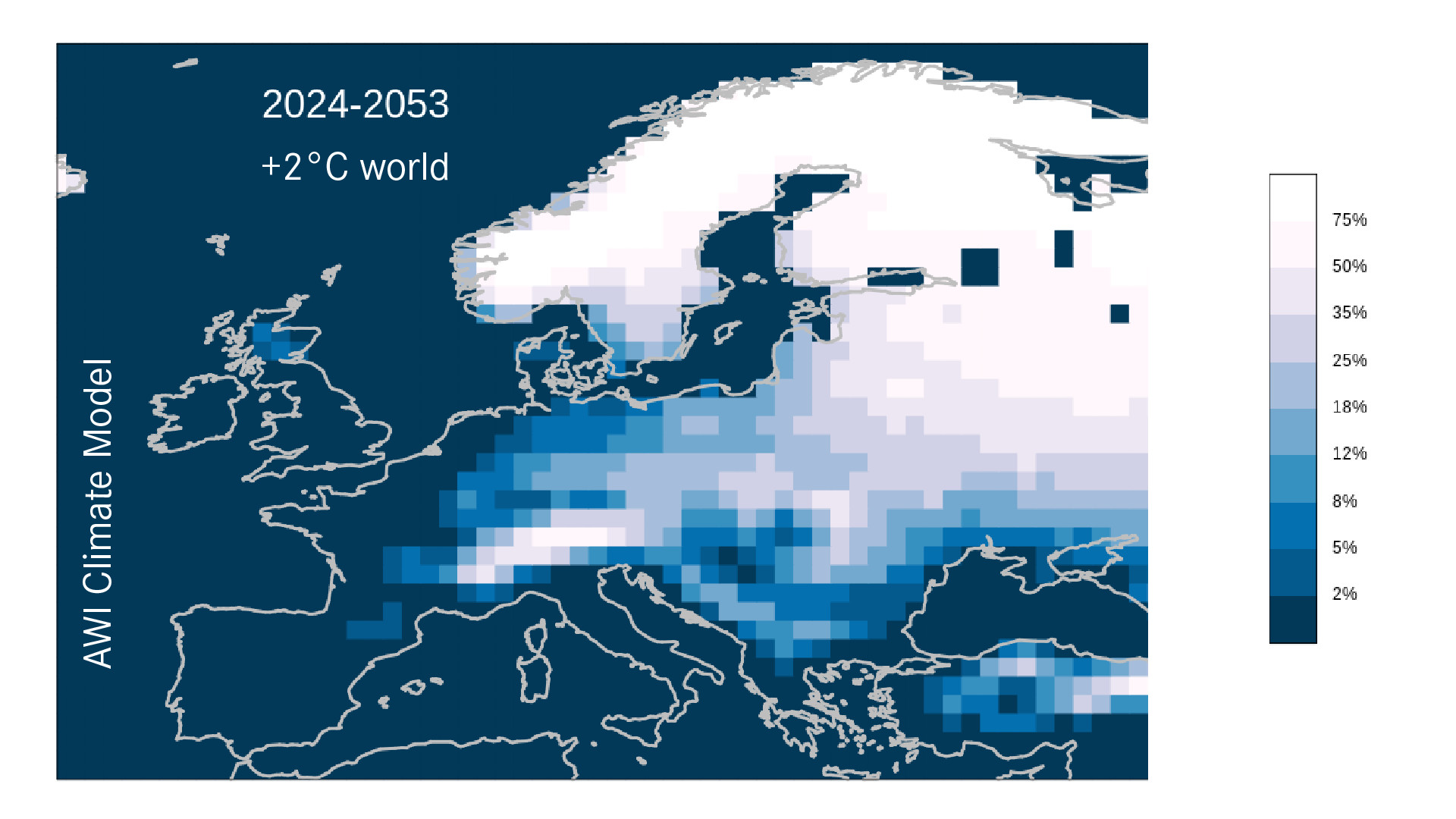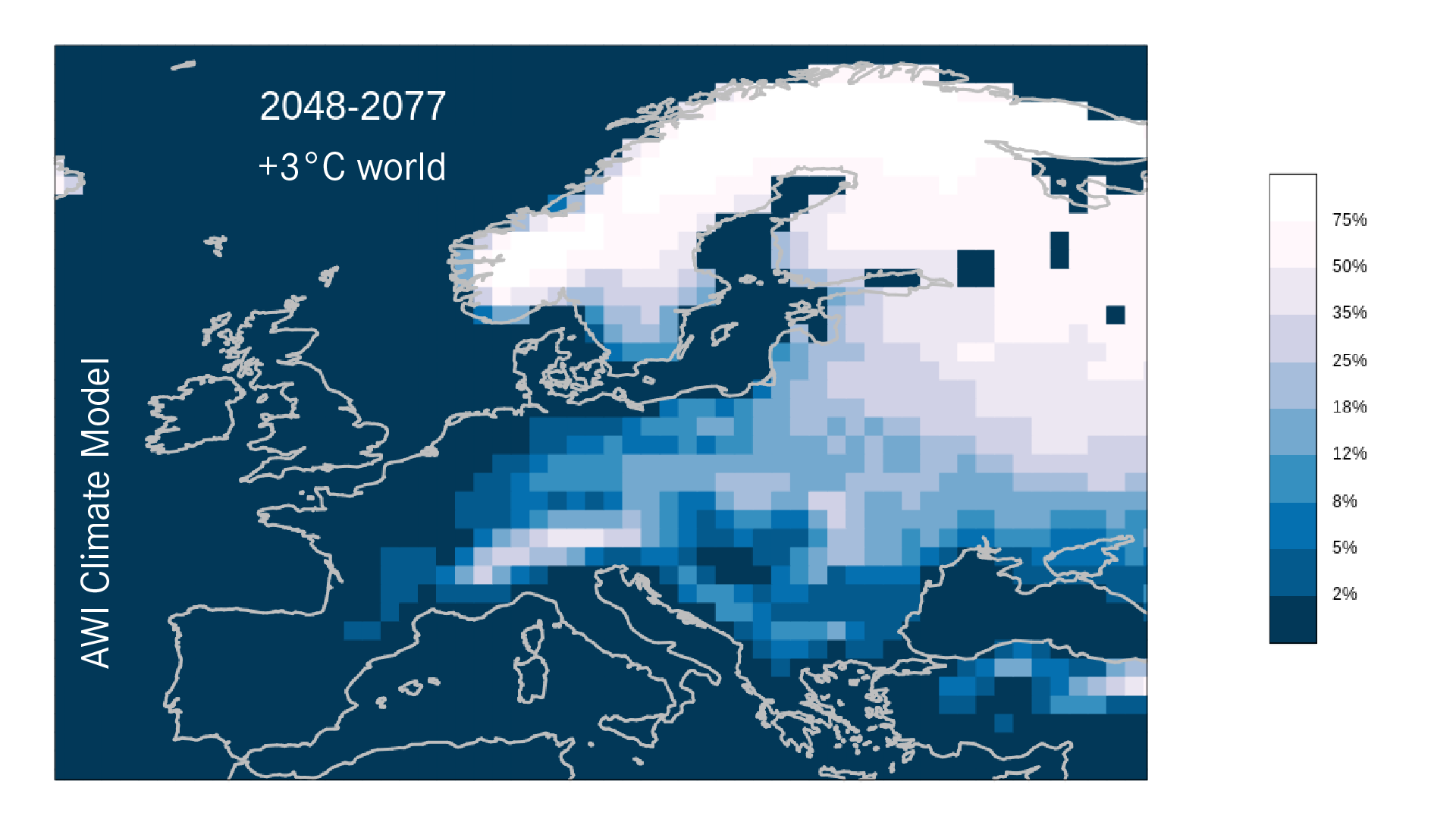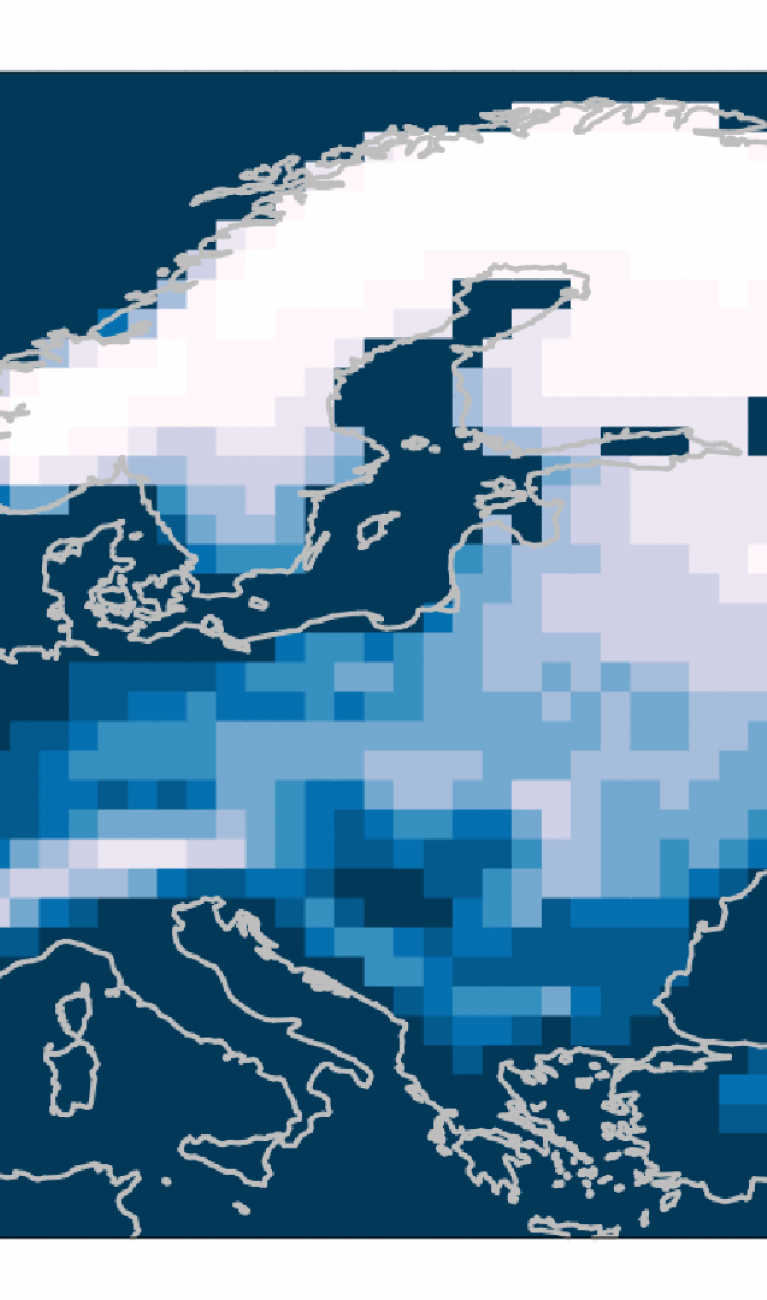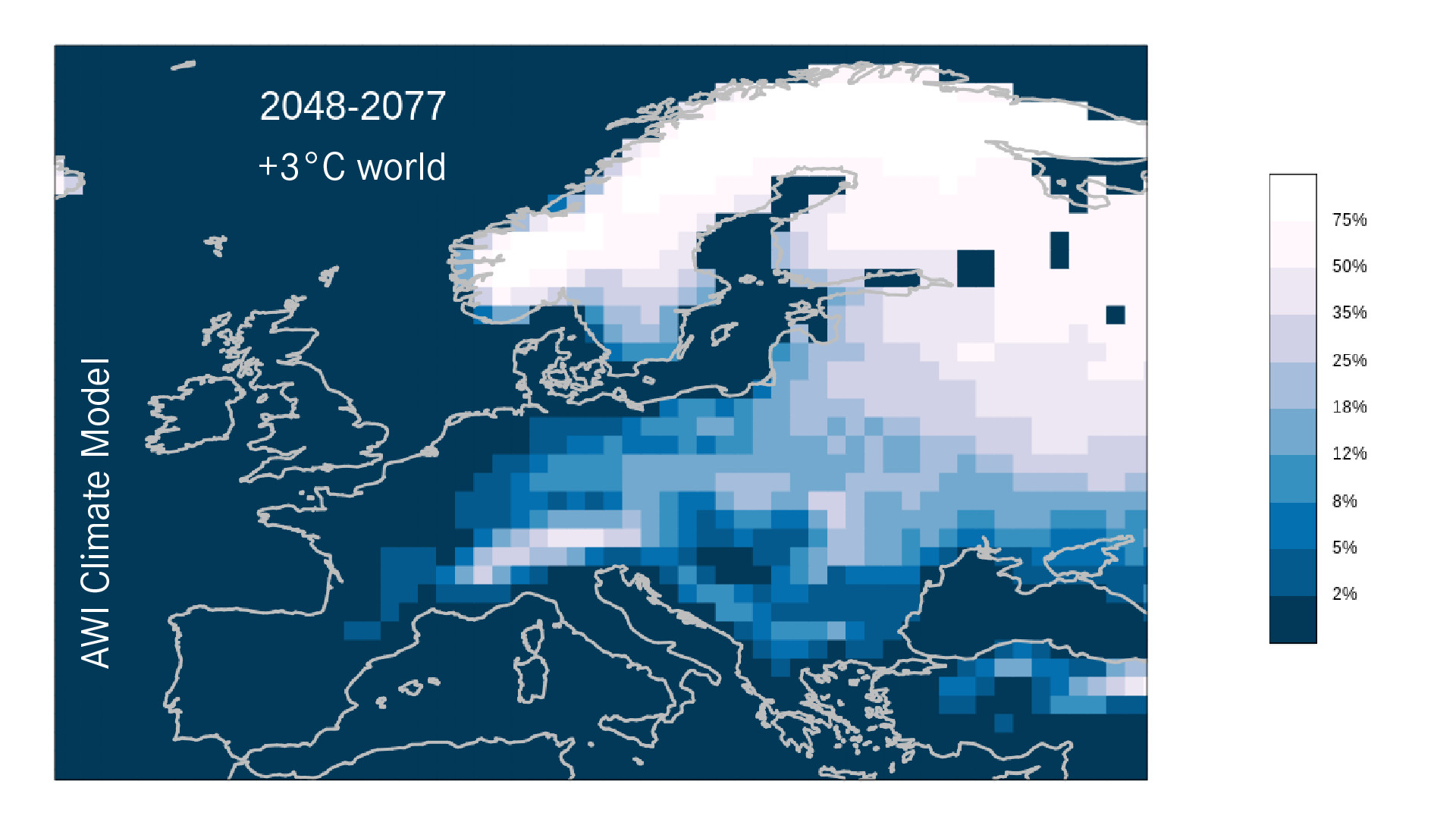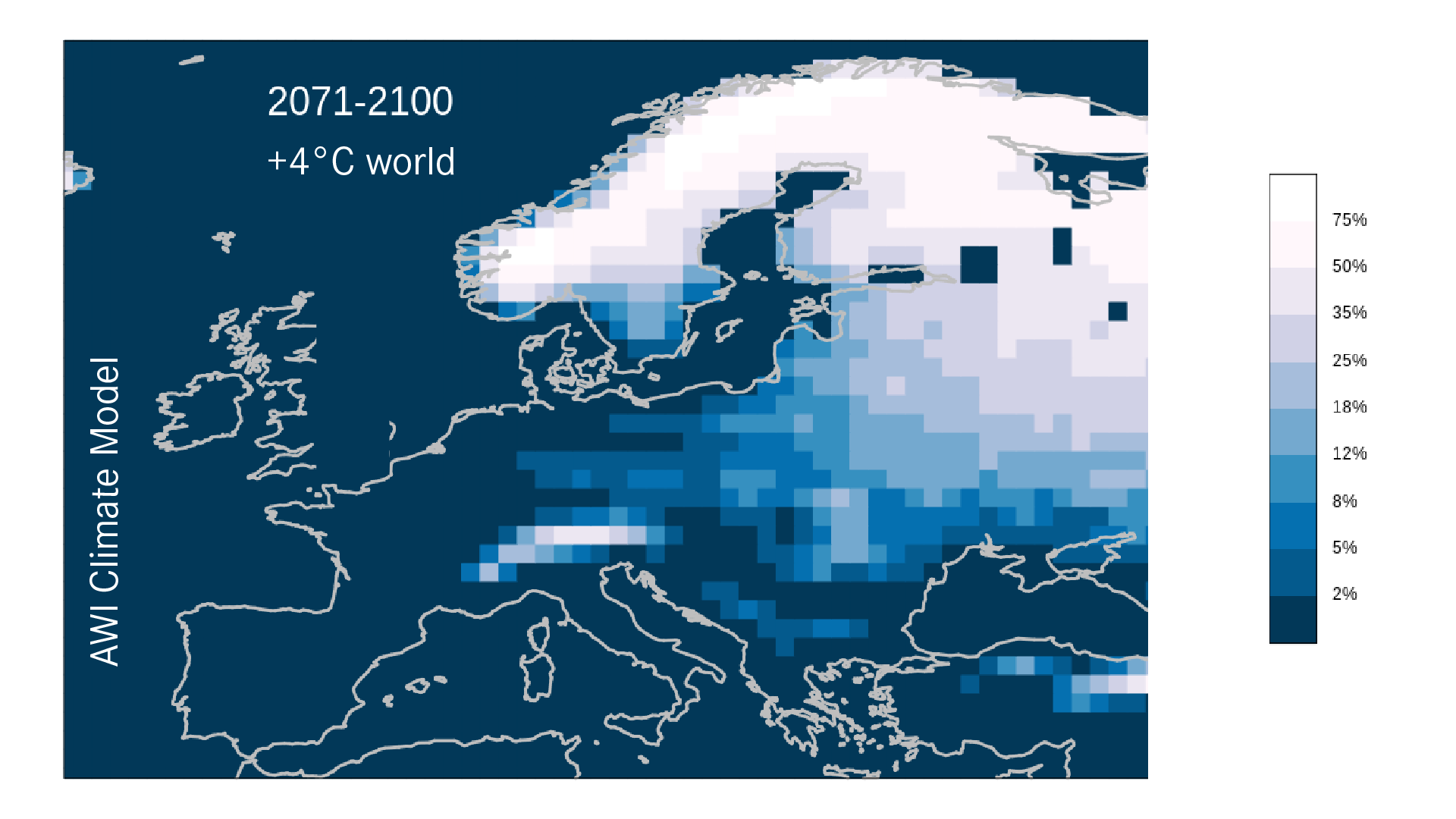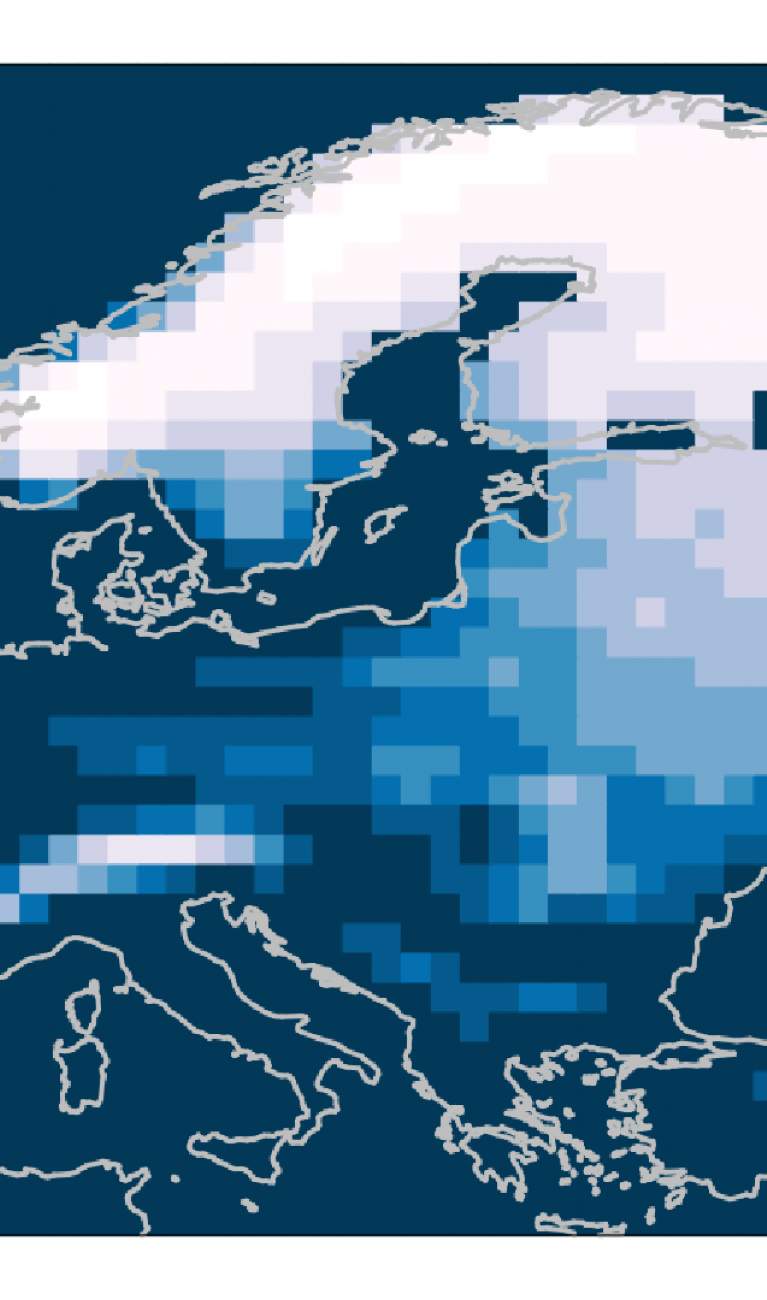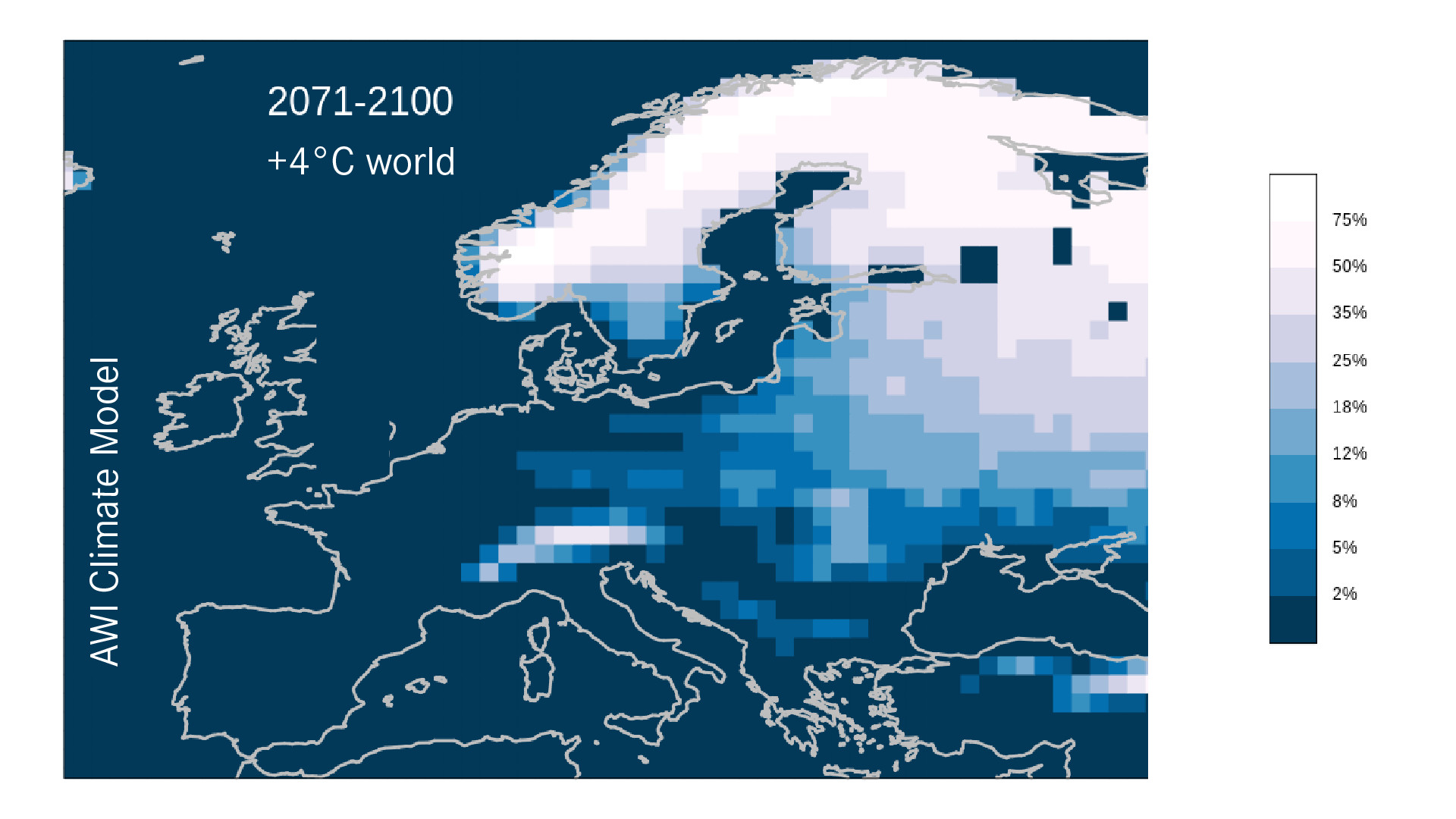White Christmas – A Thing of the Past?

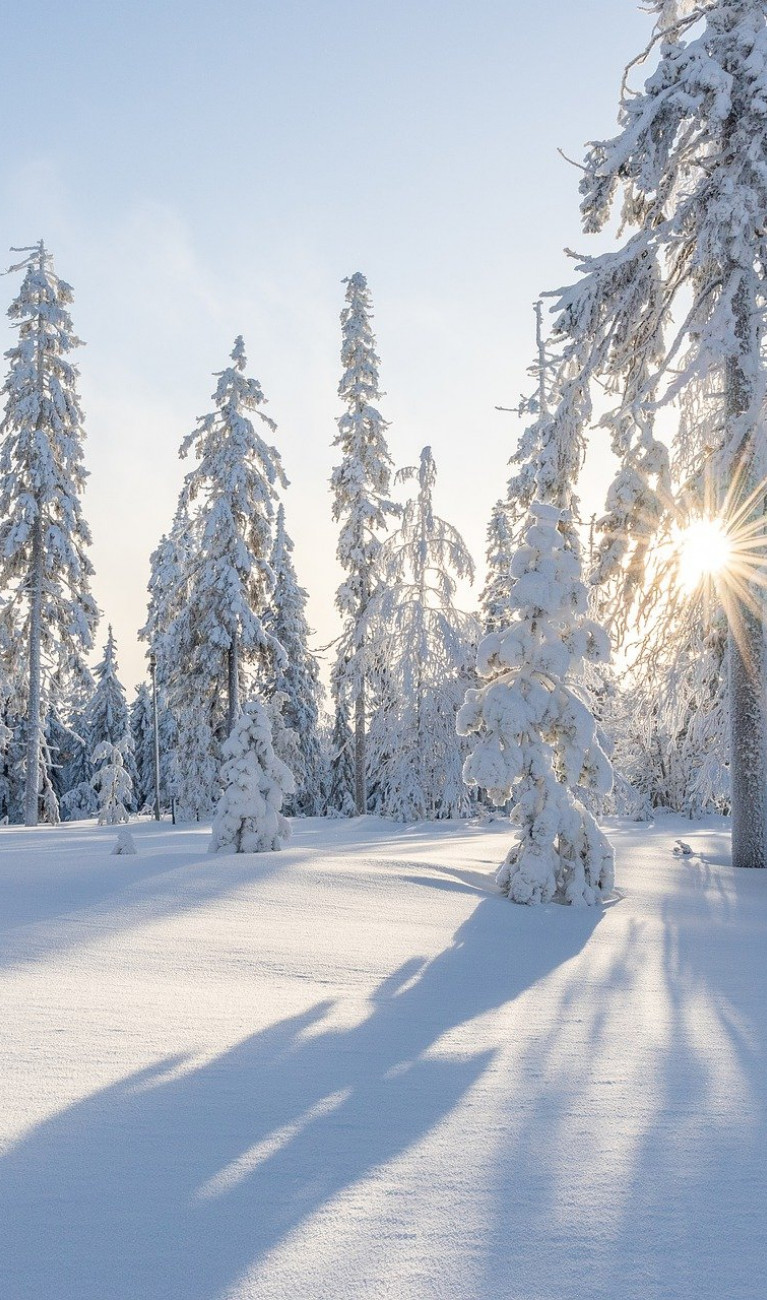
Germany seldom has the pleasure of a truly white Christmas. Climate change, however, could make such a treat even more rare. Through modeled scenarios, AWI climate researcher Helge Goessling shows what climate protection can offer.
In the past 100 years, Germany has only seen its ground covered with snow on each of the three Christmas days on four occasions: 1962, 1969, 1981, and 2010. Not to mention: “It's getting less and less likely that we will see snow during Christmas,” says Helge Goessling from Alfred-Wegener-Institut (AWI) in Bremerhaven.
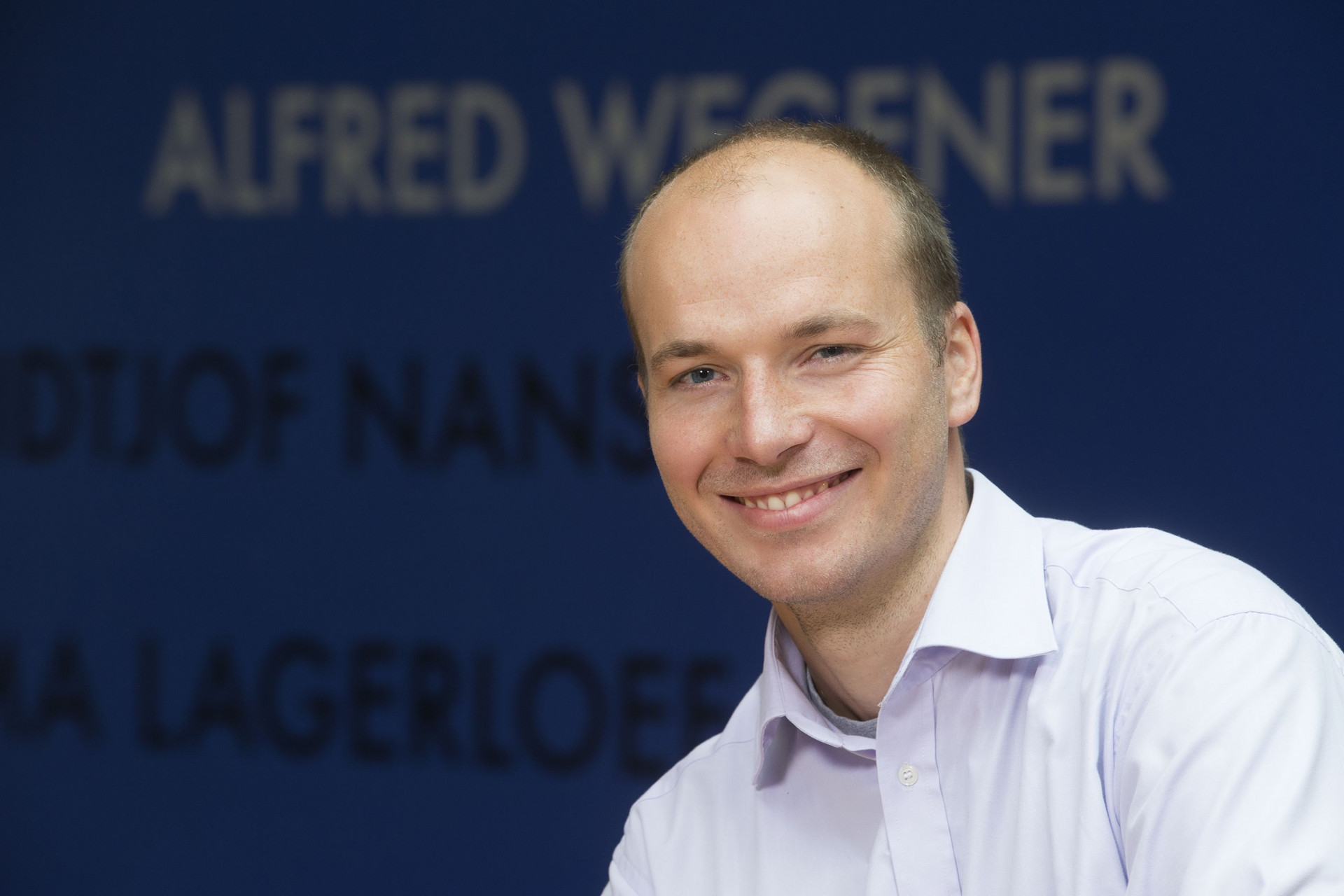
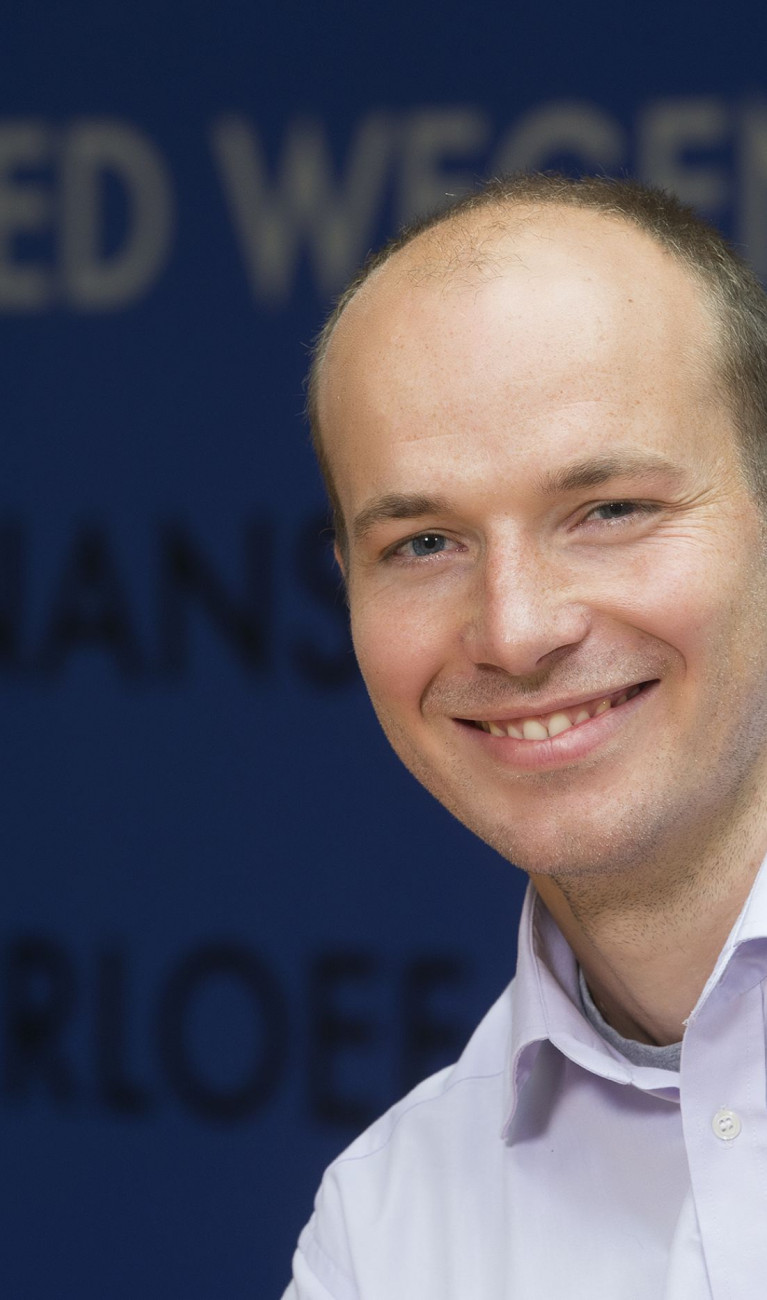
Using the AWI-CM1 climate model, the climate physicist and his colleagues explored the likelihood of snow falling over the Christmas holidays, in light of the climatic changes taking place. To do so, the researchers tinkered with key factors in the model like CO₂ concentrations and let the computer simulate random outcomes of weather events. This resulted in various scenarios that make it possible to provide summary statements on the future of the climate – and, thus, to make projections about the future likelihood of a white Christmas.
Goessling also took a look back in time in order to explore the effect that the climate had on Christmases of yesteryear. He did this by feeding past data into the computer, and it gave precise simulations of past weather behavior. “This means that we can get an extremely accurate picture of how the weather and the chances of a white Christmas have already changed,” says Goessling.
The team managed to confirm the data collected by the German Meteorological Service, which indicate a declining trend over the past 60 years. Prior to industrialization, snow around the winter holidays was quite the common occurrence. In the mid-1800s, Germany was often blanketed in snow over the Christmas holidays – particularly in the south and east. At the time, Lower Saxony registered snowfall every six to twelve years, and in Mecklenburg-Western Pomerania, the same was true every four to five years.
Snow at Christmas – once every 10... or 100 years?
In fact, throughout southern Germany and other parts of Europe, snowy Christmases were more common than they are today. Between 1985–2014, this became much more seldom. In the mid-1980s, the northwestern part of Germany had a 2-12% chance of snow for its holidays, whereas in the northeastern region, the likelihood was between 12-18%. In the highlands and the foothills of the Alps, snow was a more frequent guest, and in the Alps themselves, one could essentially assume that it would fall.
Insta Talk with Helge Goessling (in German)
White Christmas is getting rarer in Germany. What are the chances to experience snow every day from December 24 through 26 - now and in the next decades? Helge Goessling chatted with @rethinknation's Yannick Döring to explain how simulations allow a peek into the climate past and future.
What will things be like in the future? Not so surprisingly, for each degree that the climate heats up, the climate models are projecting a further decline in the likelihood of snow over the winter holidays. Even today, the south of England only gets snow for Christmas once every 20 years – if the global average temperature increases by 2 °C, Goessling's simulations predict that snow will not fall more than twice a century.
This would also impact Germany: With global warming of just 2 °C, the northeastern part of the country would only see its ground whitened during December 24, 25, and 26 once every 12-20 years. An increase of 3 °C would mean that northeastern Germany would only have this luxury once every 20-50 years, whereas a spike of 4 °C would drive that figure up to approximately every 50 years. People looking for the iconic winter experience of snow would need to spend their holidays in Norway, Russia, or the Alps.
Goessling and his colleagues now want to see in greater detail what concrete snow events would look like under changed weather conditions – e.g. the winter holidays in 2010/2011 when the German Meteorological Service last recorded a white Christmas. Would such a winter wonderland still be possible in a world that is two, three, or four degrees warmer?
For their answer, the AWI researchers will use the “storyline” approach where they feed the data on wind patterns for a given day from the past into the climate model. Then, the model generates a free simulation of other weather elements such as temperature and precipitation. With the addition of the wind data, the simulation becomes even more realistic.
The researchers have already used the storyline approach to analyze summer heat waves. Right now, one of the issues that they are working on is the heavy rainfall over parts of Western and Southern Germany of the summer 2021.
How to have a climate-friendly Christmas
Protect the climate during the holidays – by choosing sustainable options for the presents, feast, and Christmas tree.
